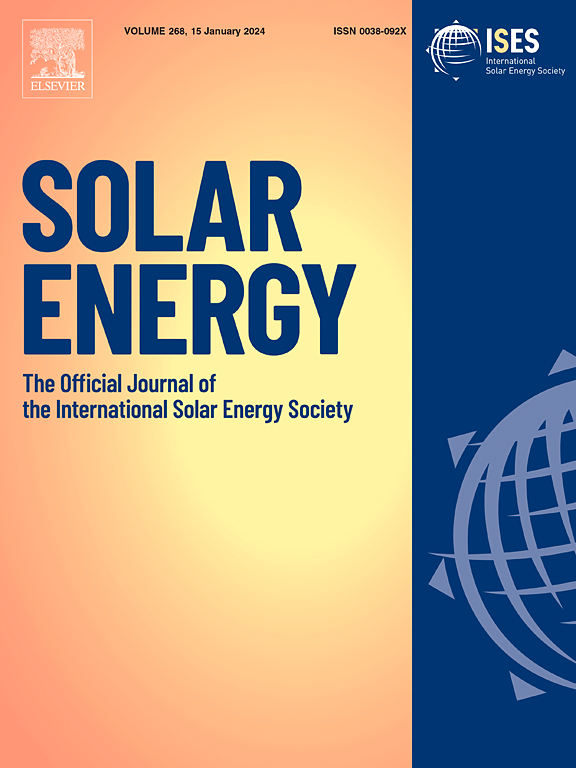Probing thermal dynamics in multi-layer solar photovoltaic modules: Unveiling hotspots and advancing innovative cooling strategies
IF 6
2区 工程技术
Q2 ENERGY & FUELS
引用次数: 0
Abstract
Thermal management of solar photovoltaic (PV) modules is crucial for optimizing energy efficiency, as uneven temperature distribution hinders performance. This study investigates the thermal dynamics of multi-layer PV modules comprising ethylene tetrafluoroethylene (ETFE), ethylene vinyl acetate (EVA), silicon cells, polyethylene terephthalate (PET), tape, and carbon fibre-reinforced polymer (CFRP). The study uniquely combines numerical, theoretical, and real-time experimental validation using a solar simulator under an average of 1000 W/m2 to mimic the solar irradiance at standard test conditions. Numerical results revealed relatively uniform surface temperatures across layers, with the cell layer reaching the highest surface average temperature (41.36 °C) attributed to its intrinsic material properties such as high adsorption efficiency and thermal conductivity. Experimental observations showed that the frontsheet (ETFE) average temperature increased to 59.98 °C, measurable among other multi-layer surfaces. These discrepancies result in efficiency variations: numerical (15.54 %), theoretical (14.05 %), and experimental (8.94 %), with the experimental efficiency showing a 36.4 % and 42.5 % reduction compared to theoretical and simulation predictions, respectively. The theoretical model assumes idealized conditions, while experimental results reveal resistive heating effects and late-stage voltage collapse in the IV curve. To mitigate temperature-induced efficiency losses, this study advocates for innovative cooling solutions, including phase change materials, metal foam fins, and thermoelectric-based radiative cooling, enabling bottom-layer thermal regulation for continuous PV operation. These findings contribute to next-generation sustainable PV technologies, supporting affordable and clean energy (SDG 7) through optimized thermal management strategies.

求助全文
约1分钟内获得全文
求助全文
来源期刊

Solar Energy
工程技术-能源与燃料
CiteScore
13.90
自引率
9.00%
发文量
0
审稿时长
47 days
期刊介绍:
Solar Energy welcomes manuscripts presenting information not previously published in journals on any aspect of solar energy research, development, application, measurement or policy. The term "solar energy" in this context includes the indirect uses such as wind energy and biomass
 求助内容:
求助内容: 应助结果提醒方式:
应助结果提醒方式:


